|
|
Last month, we shared Jen and Sally’s comments on half the books they presented at Night In/Morning In in January.
This month, we share their reviews of the remainder of the books. |
|
 Jen Jen |
|
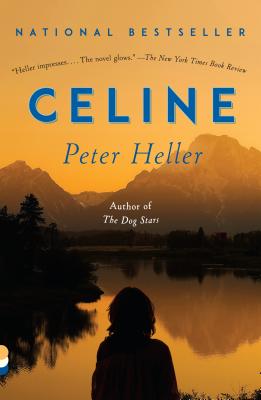
|
 |
Celine
Peter Heller
Celine, a senior citizen, is a private investigator who specializes in cold cases. Her side kick is her husband Pete, the strong silent—very silent—type. Celine is contacted by Gabriela, who wants Celine to investigate the disappearance of her father, a photographer for National Geographic who went missing in Wyoming 20 years ago. It’s assumed he was mauled by a grizzly bear, but his body was never found. Celine and Pete set off to Yellowstone National Park to investigate and discover there’s a reason why this case has gone cold. The pacing of this book is slightly faster than Louise Penny’s Inspector Gamache books, but much slower than just about any other mystery you’ll read. So why should you read and discuss this for book group? When I’m selecting books for book group, I’m always looking for a book with discussable issues. This book is loaded with them. Plus, you’ll love Celine. She’s smart and funny and respectable and just shy of sassy. I can’t tell you much more without ruining the book for you, so you’re just going to have to take my word that it’s terrific.
|
| |
|
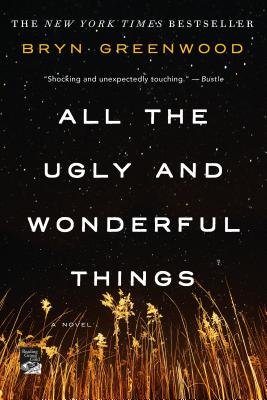 |
|
All the Ugly and Wonderful Things
Bryn Greenwood
Before this book was released, the publisher was REALLY excited about it—so much so that I was intrigued, but just never quite had the time to read it. When my friend Jamie told me her book group would be discussing the book, I asked her to let me know if it was Night-In worthy. She came back to me with a resounding “Yes,” backed up by a fellow book group member. That did it! I brought All the Ugly to the top of the pile and I’m so glad I did. I need to begin by telling you that if you have a group with members who are so put off by the f-word that any discussion of a book with repeated use of it becomes a block, don’t bother with this book. I’m not a huge fan of certain words myself, but in this book, that language is absolutely necessary to be believable. This is a story about a girl raised in a completely dysfunctional home—her parents are drug users with little thought given to raising their children. Our protagonist is Wavonna, known as Wavy. When Wavy is about 8, her dad hires a man with a criminal history and a soft heart in his garage. This man is Kellen. He sees Wavy’s neglect and takes her under his wing. He makes sure she goes to school, has boots to wear, and takes care of things that her selfish parents are not attending to. This story covers nearly 20 years. It is another book is which the pacing is brilliant. You’ll likely learn more about poverty in this book of fiction than anything else you’ve read. There are incidents in this book that will make you Uncomfortable, and I say Uncomfortable with a capital “U.” The book will absolutely be dynamite for book group discussion. It’s also worth reading the section in the book of the book called Conversation with the Author.
|
| |
|
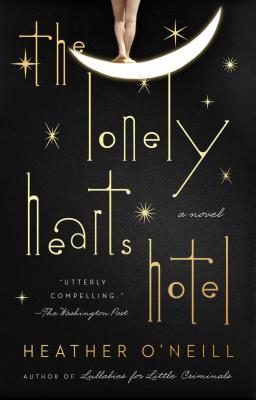 |
|
The Lonely Hearts Hotel
Heather O’Neill
This book is, at its heart, a love story. Two orphans from different parents, are left at an orphanage in Montreal in 1914. One is a boy, Pierrot, and the other is a girl, Rose. These two are very different from each other. Pierrot is a musical prodigy and people are never sure if he’s an idiot or brilliant. Rose is a dazzling entertainer. She’s a dancer, a comedian, and is loaded with imagination. These two are put together and sent out to perform shows in the homes of the wealthy to make money for the orphanage. As you might guess, the nun running the orphanage are threatened by the power of these two together. And of course, Pierrot and Rose fall in love. There are kept separate as much as possible. Eventually, Pierrot finds a home with a wealthy man with whom he develops a father-son relationship. Rose is hired as a nanny, which she does by entertaining the children and out-wilding them. Without each other, both Pierrot and Rose eventually plunged into the underworld of Montreal to survive. If you’re doing the math, you’ll know that these two come of age in the 1930s, which is not the ideal time to make your way in the world as an entertainer. There is an element of magical realism in this book, although not as pronounced as say The Night Circus. These are characters you will love and root for and don’t worry, the author provides characters for you to hate. I will tell you that because some of the book is two young people coming of age, that means you have to suffer through puberty. You survived your own, you’ll survive theirs as well. This book takes place in an interesting time and place; it’s well-written; and has a lot of meat for discussion.
|
| |
|
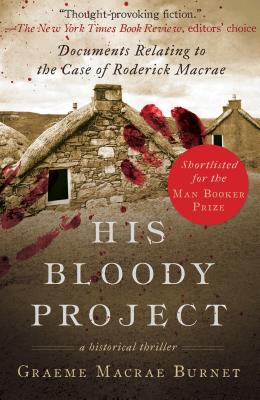 |
|
His Bloody Project
Graeme Burnet
I think this is the most interestingly crafted book I’ve ever read. It’s an historic thriller set in Scotland in the mid to late 1800s. The book opens with a 5 page preface from the author, Graeme Macrae Burnet, telling the reader how he came across the memoir of 17-year old Roderick Macrea. The memoir was written by Roderick while he was in prison, awaiting trial for a triple homicide. Following the preface are 5 pages of statements made by people in Roderick’s community who knew him, some positive and some not. Then there’s a map of the area,1 page. Following that is Roderick’s account of events. At 143 pages this part is longer than the other sections of the book—and there are no headings, chapters, or divisions other than the occasional line of asterisks. If you’re like me, you’ll read it in one sitting—I’m one of those whiney readers who wants lots of breaks. Following this is a glossary, which is a lot of fun – it gives the meanings of all the 1800s Scottish words used in the memoir. This is my only complaint about the book—the glossary should really precede the memoir, so I’m telling you now—flip ahead to the glossary, mark it and have it readily available so when Roderick talks about a croman or a fetch or sea-ware, you know he’s talking about a tool, a doppelganger, and seaweed. Let me remind you, Roderick is being accused of murder times three. The memoir is not all lush pasture, ale, and shepherding. Following the glossary are the autopsy reports of the victims, and then an excerpt of a book written by a lawyer involved in Roderick’s case. Then we have the trial, and the epilogue. So why should your book group read this? It’s a great story threaded with uncertainty; it has characters you’ll sympathize with and characters you’ll hate; the time and place of the story are interesting and will prompt discussion of class and power and tradition; and have I mentioned it’s organized in a fascinating way? It’s one of my new favorite books.
|
| |
|
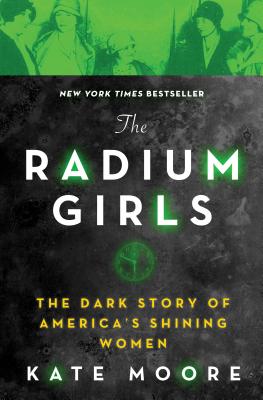 |
|
The Radium Girls
Kate Moore
The Radium Girls is a nonfiction account about a piece of American history that not enough people know about. As the U.S. got involved in World War I, there was a demand for watches and other instruments which could be seen in the dark. Because the newly discovered radium glows in the dark, it was used for painting numbers on watch faces, dials, and so on. To paint those numbers, a very fine tipped brush was used. However, after you press the point of a fine tipped brush against a surface it spreads out and becomes not finely pointed. So the painter either has to dip the brush in water, and repoint the bristles with a towel OR simply put the brush in her mouth and repoint it with her lips. This was known as lip pointing. Radium painters were paid per piece, not per hour, so you can bet they wanted to complete as much work as possible and lip pointing saved time. But here’s the problem. The human body is not suited to ingest radium. It settles into the body and begins to deteriorate the place where it settles. And it doesn’t settle in the same place in every body. The people hired as radium dial painters were women, many of them very young. For these women, the work was important. Many of them came from poor families and they received good pay for their work. After a while, a number of these young women began to have strange afflictions, and soon they began dying. Your group will want to read and discuss this book! |
| |
|
|
|
|
|
|
|
 |
|
|
 Sally Sally |
|
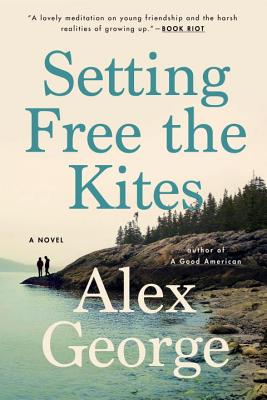
|
|
Setting Free the Kites
Alex George
Do you remember how you met your childhood best friend? In 1981, we moved to Stillwater, Oklahoma. About 45 seconds after we entered the house, the doorbell rang. Standing at the front door was a five year old girl who announced, “I’m here to meet my best friend!” I called Jen, and her friendship with Raegan Fauks began that very minute.
Setting Free the Kite is about the friendship of two boys who met in a different way than Raegan and Jen did. Robert was in the boys’ locker room at school, on the receiving end of a swirlie when Nathan walked in. Although he was outsized, Nathan began to kick and punch the boy who was bullying Robert, attracting the attention of a janitor. The two boys became fast friends, despite differences in their temperaments.
Robert was guarded and cautious (and gradually the reader discovers he has good reason for this) while Nathan was fearless, optimistic, and full of hope. Their friendship enabled each boy to cope with a family tragedy. Eventually, life became a bit more stable for both boys. When each of them secured a summer job at the shabby amusement park Robert’s dad owned, their attention turned to work, exploring the abandoned paper mill in town, and, for Nathan, a crush on a co-worker.
George does a wonderful job portraying young teen-age boys in all their angst, curiosity, lack of judgment, and zest for life. The book made me laugh out loud, and it broke my heart.
And what does all this have to do with kites? Ah, you’ll have to read the book to answer that.
|
| |
|

|
|
Silence
Erling Kagge
Imagine the silence of a 50 day trek across Antarctica, alone. Imagine wanting the silence to be so complete that you disable the radio you’ve been given in case of emergency. This was the experience of Erling Kaage, the author of Silence.
Like all of us, Kaage lives a busy life in a world full of noise. He might be a bit busier than many of us—he’s an explorer, lawyer, art collector, entrepreneur, politician, Rolex model, author, publisher, and the single dad of three daughters. Whew! (You may have heard of him—he’s also the guy who walked through the sewers of New York City.)
A dinner table conversation with his kids and a lecture he gave on the subject of silence were the impetus of this book. After the lecture, Kaage went to a pub with a group of students, who wanted to know more. They asked him: What is silence? Where is silence? Why is silence more important now than ever before? The book is a response to those questions.
He circles the questions in 33 short essays. Kaage draws on his own experience, like the Antarctica trek, as well as conversations with artists, poets, athletes, philosophers, and musicians. Interspersed with these reflections are photographs from his expeditions and reproductions of art work.
There are no startling revelations about silence in the book. Sure, Antarctica is one place to experience silence, but so you can also experience it on the dance floor and in your own bathtub. Kaage provides a thoughtful, almost meditative exploration of the many aspects of silence, and invites you to do so as well.
And it says something about my age that as I read the book, I kept hearing Simon and Garfunkel’s “Sound of Silence” in my head!
|
| |
|
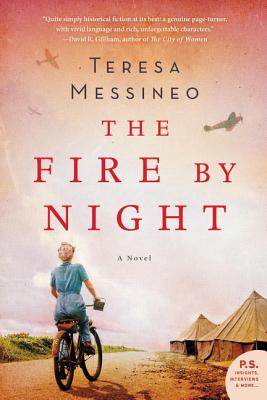 |
|
The Fire by Night
Teresa Messineo
Last summer, my husband and I saw the local production of the musical, South Pacific. It’s the story of an Army nurse stationed on a beautiful island in the south pacific during World War II. The nurse sings, and falls in love, while the war remains mostly in the background.
The Fire by Night, a novel, is also about Army nurses during World War II, but it tells a far grittier story. Actually, it tells two stories. Jo and Kay became fast friends during nurses’ training. Afterwards, Kay was briefly stationed in Hawaii before Pearl Harbor, in what seemed to be a tropical paradise much like South Pacific. From there she went to Corregidor, and on to a Japanese POW camp in Manilla. Jo went to the Western Front in Europe. As the Germans advanced in 1945, her field hospital was evacuated. There wasn’t room for everyone in the trucks, so Jo stayed behind with six patients. The plan was for a truck to deliver the first set of patients and nurses, then return for Jo and her charges. However, the convoy was attacked. Everyone died, and the trucks as well as the road were destroyed. Jo continued at her post, caring for her patients under exceedingly difficult and dangerous conditions. The book alternates between the two women’s stories, and occasionally refers back to their earlier lives. In nurses’ training and in the military they experienced sexism, sexual harassment, and were generally treated as inferior to male soldiers.
There are romantic interludes in the book, which didn’t work for me, but they did serve as a respite from the tension of their other experiences.
The Fire by Night brings us a powerful story of friendship, perseverance, and heroism. It’s an important addition to the story of women’s roles in World War II.
|
| |
|
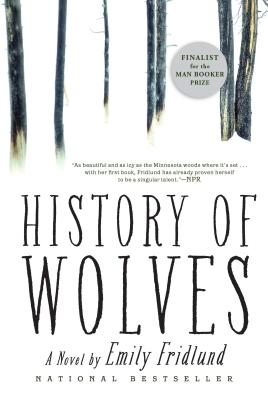 |
|
The History of Wolves
Emily Fridlund
If you're looking for a great book to curl up with on these cold winter evenings, you'll want The History of Wolves by Minnesota native Emily Fridlund! The novel is set in an imagined place roughly west of Duluth and north of Brainerd, shaped by the vacations Fridlund's family spent in the Chippewa National Forest each summer when she was growing up.
The book's narrator is a teenager named Linda, who lives with her parents in a dilapidated house on a failed commune outside a small town. The house is isolated and Linda's home life is isolating as well, with scant warmth or nurturing. Her parents turned their backs on mainstream culture years earlier, and have no interest in preparing Linda for life in the broader world. It's no wonder that Linda is a loner at school. She has few social skills, and is always on the outside. However, she's an intense observer of the people around her, and this interest borders on stalking.
Linda is drawn to a student named Lily, who is an enigma to her. Linda is also curious about Mr. Grierson, a new history teacher at school. She wonders about the relationship between Lily and Mr. Grierson, which is vaguely hinted at throughout the novel. When Mr. Grierson is arrested on child pornography charges, Linda struggles to understand what she thinks she knows about the situation.
About this time, the Gardner family moves in across the lake from Linda's home, and she turns her attention to them. Leo is the dad, and he's often away. His much younger wife, Patra, welcomes Linda into their home and soon, Linda is babysitting their little boy, Paul.
During the summer, Linda's world expands as she discovers how at least one family outside her own lives, and experiences acceptance and affection. However, Linda doesn't understand much of what she sees and experiences, and once again, her attempts to explain these experiences to herself are widely off the mark. The reader aches for her. The choices and decisions Linda makes over that summer have lasting effects on her life, as well as the lives of others.
The writing is beautiful and compelling, and the book is filled with tension and atmosphere. The northern Minnesota setting will surely be of interest. I will say this seems to be one of those books you either love—or you don’t. I think books like that make for great discussion!
|
| |
|
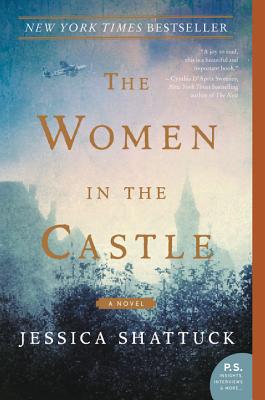 |
|
The Women in the Castle
Jessica Shattuck
The Women in the Castle is historical fiction, set in Germany in the years after the end of the second World War. After the war, Marianne von Lingenfels returned to her late husband’s ancestral Bavarian castle. She planned to honor the promise she made to her childhood friend, who conspired with her husband in the unsuccessful July 1944 plot to assassinate Adolf Hitler. Both men, and their co-conspirators, were hanged. Her promise was to find and protect the conspirator’s widows. She brought two of these women and their children to the crumbling castle, and they began to rebuild their lives. Each woman had a history, secrets, and ambitions for the future.
Benita Fledermann, was the widow of the charismatic Constantine. She survived the Russian occupation of Berlin but paid a heavy price. Ania Grabarek, walked west, out of the wreckage of Poland, with her two sons and was also keeping secrets about what she had seen and done. Although they band together, the support they give one another is tinged with regrets and guilt about their different pasts, and set against the deprivation of post-war Germany
One theme of the book is how evil invades and corrupts normal existence, Another deals with personal responsibility and morality in war. Although the story is dark, it is lightened by the ending, centering on the generation of the women’s children in adulthood.
The book is beautifully written, carefully constructed, and each character comes alive in ways which deeply touched me. You won’t want to miss this one. |
|
|
|
|
|
|
| |
|
|
|
|

Ann
|
|
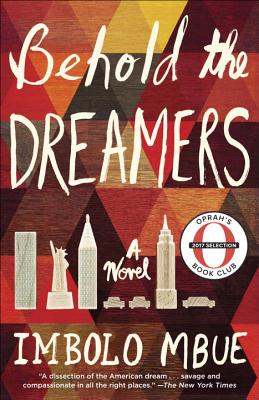 |
|
Behold the Dreamers
Imbolo Mbue
Jende Jonga and his wife Neni have come to New York City from Cameroon with the dream of a better life for themselves and their six year old son. In the fall of 2007, Jende is hired as a chauffeur by Clark Edwards, a Lehman Brothers executive. Neni is also employed during the summer as a nanny for the Edwards' young son, Mighty. Jende and Neni are plagued by bureaucratic and legal difficulties as they strive to become permanent residents of the United States. In addition, their relationship with Clark Edwards and his wife Cindy lands them in an ethical dilemma with life changing consequences. Behold the Dreamers skillfully raises awareness of the challenges faced by immigrants to the United States. At the same time, Mbue has skillfully portrayed the lives of the Edwards family and the Jonga family in such a way that makes it possible for readers to have empathy for each of the characters as they face extreme challenges and strive to achieve their dreams.
|
| |
|
|
|
|
|
| |
|
|
|
|

Bob
|
|
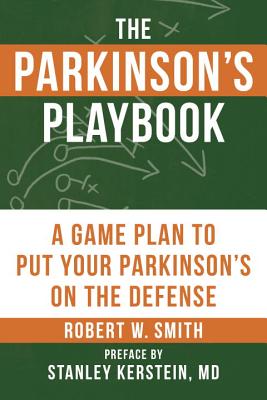
|
|
The Parkinson’s Playbook
Robert Smith
Not strange that I would be reviewing this book (find it in the Health and Wellness Section in the store) since I have first-hand experience with Parkinson’s. I found the book interesting and a quick read of 137 pages, with a number of pictures and diagrams. The appendix is a bit of a bonus in that there are several pages of Yoga positions and a Reference section that, unfortunately, just lists books on Yoga.
The book is written by a fellow who has Parkinson’s Disease (PD) and he provides a discussion of the course of action that he is using to deal with it. For those who don’t know, there is no cure for Parkinson’s but there is some evidence to support ways one might push back against the symptoms. Far from being a technical book (with one data point) it is interesting to read his philosophy as he compares his fight to a football game. Smith is a Landscape Architect and a partner in a firm. He was working 60-80 hours a week in a high-pressure environment, and suddenly realized his body wasn’t always on the same page as he was. Trust me, it’s distracting when you suddenly find your hand/arm quaking like a leaf in a tornado. He relates one story of having to sit on his hand to keep it under control while doing a presentation.
He took on the challenge of PD and developed a “game plan” which he shares with the reader. While there are no PD references, I do know that his plan, which is basically getting yourself healthy, is well-supported by PD researchers and neurologists. I often recycle books that I have read, but this one I’ll hang onto. It’s as good a model as I’ve seen. Plus I never can get those yoga poses right….maybe the appendix will help.
|
| |
|
|
|
|
|

Gail |
|
 |
|
|
| |
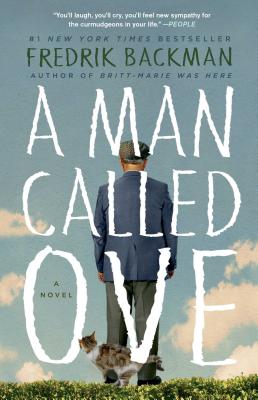
|
|
A Man Called Ove
Fredrik Backman
Ove is a curmudgeon. He judges people by the car they drive and it's best if it's a Saab. People wearing white shirts spell trouble. This new electronic stuff is beyond him and everyone must follow the rules. Ove's wife died last year and he thinks he might just as well join her. But life (in particular a neighbor named Parvineh) keeps getting in his way. I couldn't help but think about some curmudgeons I have known. The story is set in Sweden, which is the author's home. He has also written My Grandmother Asked Me to Tell You She's Sorry and Brett-Marie was Here. Both of these titles were best sellers in Sweden and are being published around the world. Does the book have a happy ending? Not exactly, but a very satisfying one.
|
| |
|
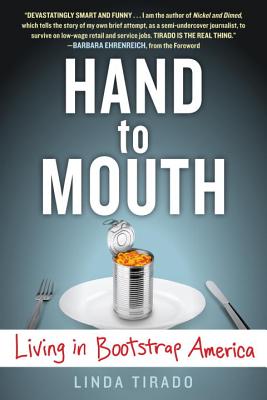
|
|
Hand to Mouth: Living in Bootstrap America
Linda Tirado
This book opens with a forward by Barbara Ehrenreich, who wrote Nickel and Dimed. As a journalist, Barbara went undercover to see if she could survive on low-wage retail and service jobs. Linda Tirado actually lives the story of poverty every day and she tells what it's really like. Warning: the language is not pretty but the story is an eye opener and sets us straight on so many clichés that we hear about the poor. If you've ever been broke, you'll want to read this book. If you've "never" been broke you need to read this book!
|
| |
|
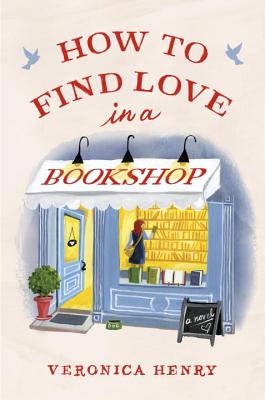
|
|
How to Find Love in a Bookshop
Veronica Henry
With that title the book is bound to be good, right? Emelia has come home to run Nightingale Books after the sudden death of her father. She has a rude awakening when she discovers he father spent more time chatting with the customers instead of keeping track of the business end of the shop. Also, there doesn't seem to be enough money to pay the bills! The story is filled with quirky characters and intertwined tales of love, loss, and community which makes a delightful read. Though set in England, this could be in small-town America. |
| |
|
|
|
|
|
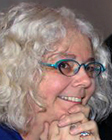
Hannah |
|
 |
|
|
|
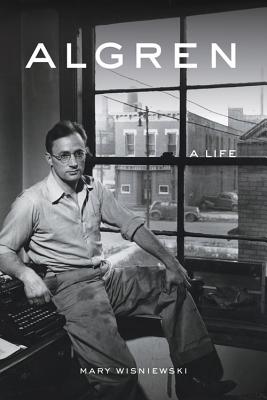
|
|
Algren: A Life
Mary Wisniewski
I was inspired to read this biography at a book award program when Wisniewski read about Algren trying to steal a beloved typewriter and ending up in a Texan jail. Algren rode the rails in the 30s, hung out with barflies and lowlifes, and famously had a tempestuous, years long affair with French intellectual Simone de Beauvoir. He wrote stunning prose compassionately describing Chicago characters from the dregs of society. His best known novel, Man with a Golden Arm, made it to Hollywood but Algren was too independent (aka stubborn) to last as a screenwriter. He was a complicated, flawed man who could have done so much more. He's now venerated in Chicago: this readable book shows us his humanity and his inhumanity. "Lies are just a poor man's pennies." One of his characters says this: but Algren's currency was hard truths. |
| |
|
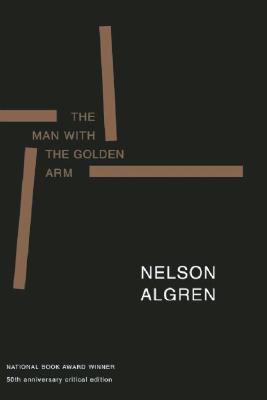
|
|
The Man with the Golden Arm
Nelson Algren
The novel is about Frankie Machine (aka Dealer because he deals cards in the backroom of the Tug & Maul tavern) and his wheelchair bound wife Sophie. Wisniewski says that Algren added Frankie's drug addiction, central to Frankie's struggles, after the book was largely complete. The poetic writing about the lives of people Algren saw as victims of a cruel society is stunning. He catches and plays with slang, part of the marvel of this close look into the lives of people we normally avoid seeing. The Otto Preminger movie starring Frank Sinatra and Kim Novak was nominated for three Oscars and helped kill the censoring production code, but it doesn't begin to do justice to the book.
From the first page: "For twenty years, upon the same scarred desk, he had been recording larceny and arson, sodomy and simony, boosting, hijacking and shootings in sudden affray: blackmail and terrorism, incest and pauperism, embezzlement and horse theft, tampering and procuring, abduction and quackery, adultery and mackery." What richness! (I had to look up a couple of those words, which isn't typical of Algren's prose. But I knew when I read this sentence that I was in for a wild ride.)
|
| |
|
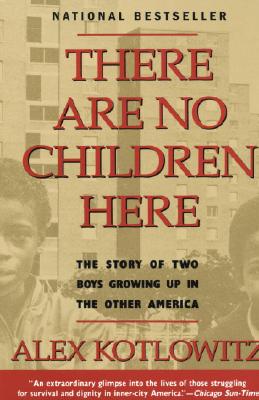
|
|
There Are No Children Here: The Story of Two Boys Growing Up in the Other America
Alex Kotlowitz
I recently had the opportunity to join a group that sat down with Kotlowitz to discuss his national bestselling, award-winning non-fiction book. My daughter had introduced me to it years ago when she read it in school. I have since been haunted by the story, especially the opening scene with the boys having a rare nature experience: sneaking onto a railroad embankment in the inner city, digging randomly with crow bars in the hope of finding garter snakes to take home as pets. (Kotlowtiz told us his first draft opened with a violent scene but he realized people needed to be introduced to the boys as real children first or they would turn away.) The book is just as relevant and compelling re-reading it today. The housing project the brothers lived in has been demolished, but life in these neighborhoods is still nothing like my blessed experience.
I asked Kotlowitz how he avoided despair. (At some points I had to take a break from reading the book because I was overwhelmed, and he immersed himself in this life for years to research and write the book.) He paused for a while, then said that yes, in the middle of it he did have a rough time, and that two things got him through it. First, he reminded himself that if it was bad for him, it was so much worse for the boys and their families. Second, there was catharsis in telling the story.
Kotlowitz is currently working on a book about the plague of violence in Chicago. He produced and wrote The Interrupters, a documentary about three young people working on violence prevention.
There Are No Children Here is an important book by a remarkable man. |
| |
|
|
|
|
|
| |
|
|
|
|

Tim |
|
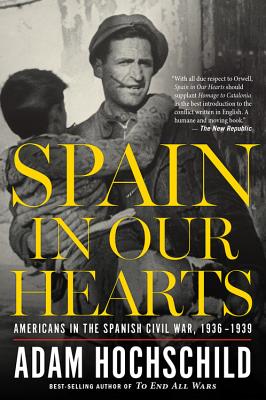 |
|
Spain in our Hearts
Adam Hochschild
I didn’t know much about the Spanish Civil War (1936–1939) other than Hemingway was one of the correspondents covering the conflict. It came as something of a surprise to find that the war had wealth inequality and corrupt political influence as two of its primary motivators. I read this at the same time I was reading  Fire and Fury, Michael Wolff. Fire and Fury, Michael Wolff.
I was a little confounded by the amount of cross fertilization of ideas and themes in the two books. Without going into the politics of each, the nugget I took away from the reading was: might and ruthlessness, if they’re the greater power, can overcome justice and democracy. There is no guarantee. |
| |
|
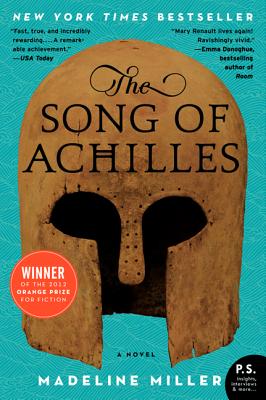 |
|
The Song of Achilles
Madeline Miller
Having read an advance copy of Circe, by the same author, I was hot to see if Madeline Miller had been as insightful into her characters, as she was in her earlier book, The Song of Achilles. I found that Miller may have been even better with her first book; or the subject may have struck a more tuneful chord with me. Told from the perspective of the relatively unknown Patroclus, the story has his unique perspective on the whole of the Trojan War, as well as the relationship between Achilles and his mother, the immortal Nereid Thetis. You might have thought you had ‘mommy issues’… imagine if your mother was a goddess. This book is something along the lines of Mary Renault, or Robert Graves, but neck deep in Homer, so if you’re looking for a sweet escape, here’s a great suggestion. |
| |
|
|
|
|
|
Gloria, this month’s guest reviewer
|
|
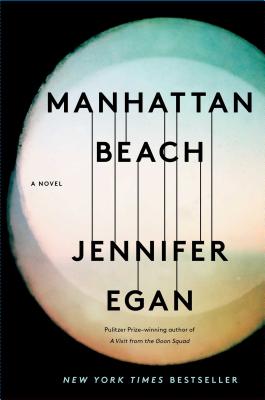 |
|
Manhattan Beach
Jennifer Egan
This historical novel takes place in the 30’s and 40’s, during the stock market crash, rampant organized crime, and new opportunities for women in the work force. Three lives are intertwined throughout the story: Anna Kerrigan, her father Eddie, a former stockbroker, now a bagman for a crime boss, and Dexter Styles, a mobster.
We first meet Anna as a young girl as she accompanies her father on a visit to the home by the ocean of Dexter Styles. The experience is a memory that will set events in motion at a later date. At this point, Egan leaves us with questions and moves us 10 years along to 19-year-old Anna. She is living with her mother and younger sister, who is disabled. Her father disappeared without a trace 5 year earlier, leaving behind living money but no explanation. Anna has made the decision to go to work at the dock in the Naval shipyard. She starts as a parts inspector, but soon sets her eyes on becoming the first female diver in the Naval Yard. She has to face the extreme sexist beliefs and actions of those in charge. At the same time, she has a chance meeting with Dexter, which starts her questioning her father’s disappearance.
They say that life works in circles, and this book is an example of this theory. And it is a remote boathouse on Manhattan Beach, that changes the destinies of Anna, Eddie and Dexter, at three different moments in time.
|
Would you like to be a guest reviewer?
Email Sally at sally@beagleandwolf.com |
| |
|
|
|
|
|
— page top —
|
|



 Jen
Jen




 Sally
Sally




















 Fire and Fury, Michael Wolff.
Fire and Fury, Michael Wolff. 